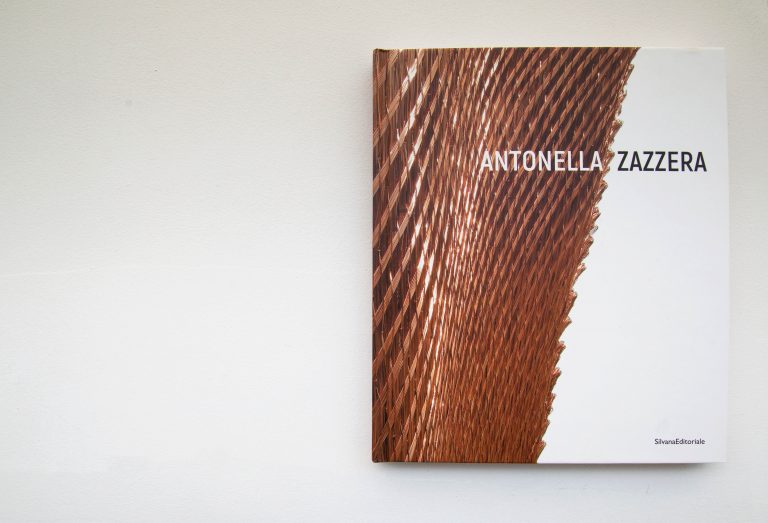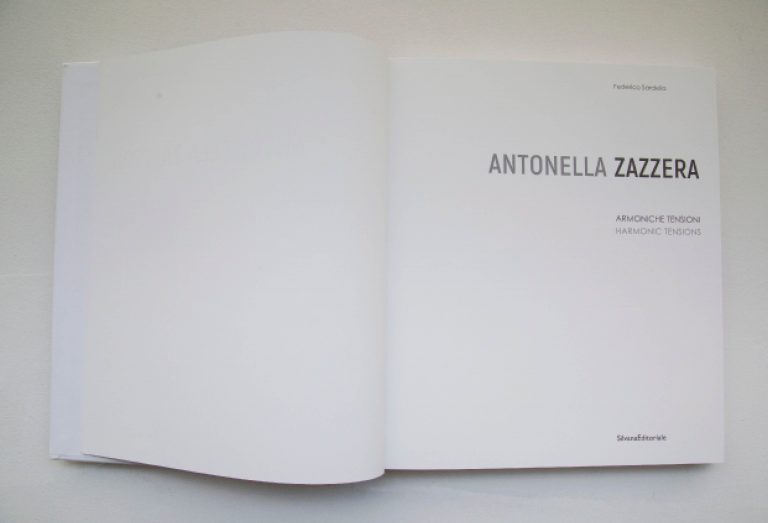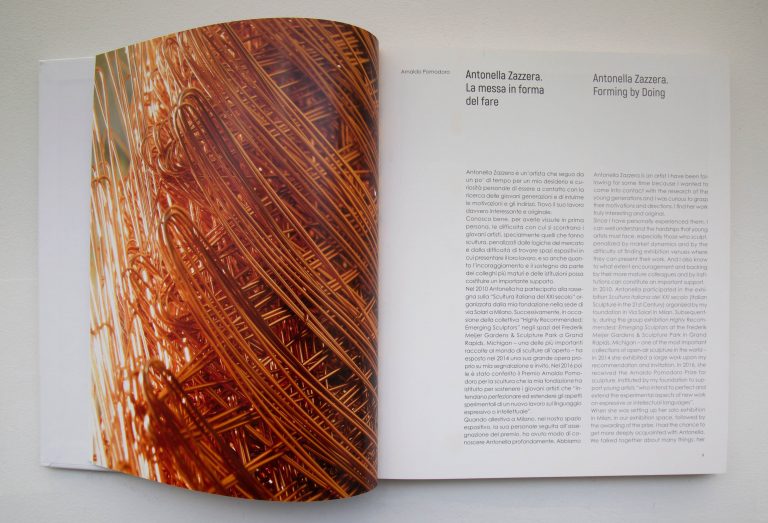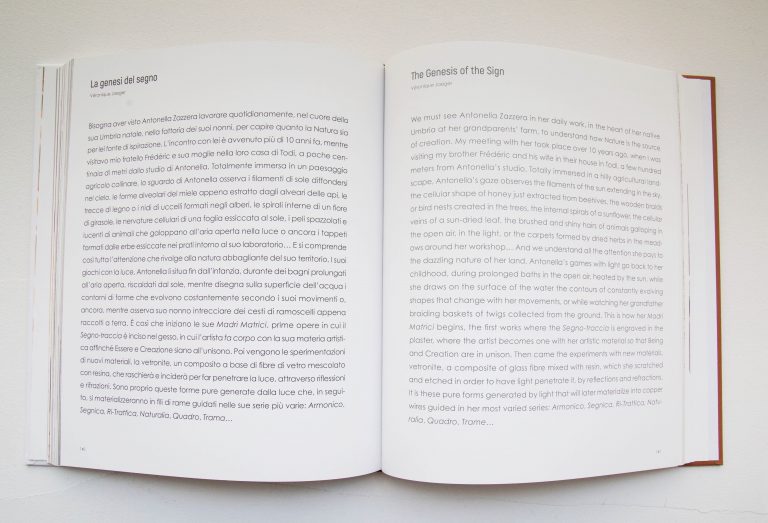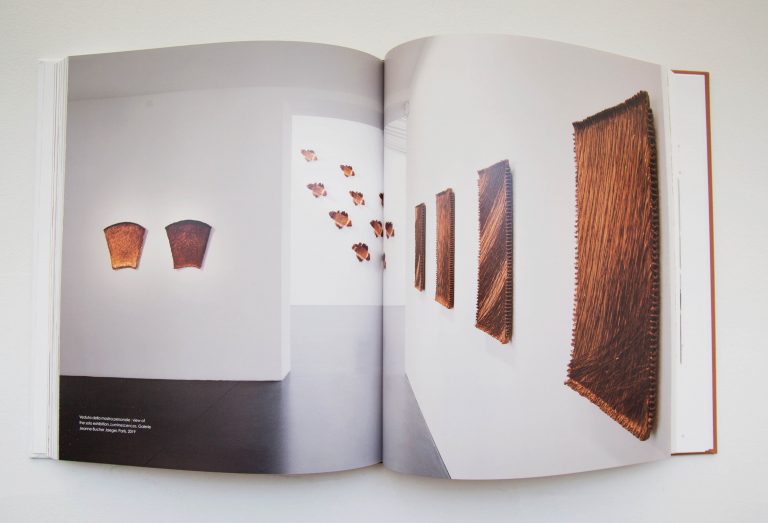8,9 × 10,4 cm
109 pages
Bilingual edition
Italian / English
28,00 €
Monograph, 2023
Edited by Federico Sardella
Essays by Arnaldo Pomodoro, Federico Sardella
Written by Antonella Cattani, Peter Frey and Véronique Jaeger
Excerpts from The Genesis of the Sign by Véronique Jaeger (pages 141-142)
We must see Antonella Zazzera in her daily work, in the heart of her native Umbria on her grandparents’ farm, to understand how Nature became the source of her creation. (…) Antonella’s play with light goes back to her childhood, during prolonged moments in the open air, heated by the sun, while on the surface of the water, she drew the contours of constantly evolving shapes that would change with her movements or while watching her grandfather braiding baskets of twigs picked from the ground. This is how her “Madri Matrici” began, the first works in which the “Segno-traccia” was engraved in plaster, where the artist became one with her artistic material so that Being and Creation were in unison. Then came the experiments with new materials, vetronite, a composite of glass fabric mixed with resin, which she scratched and etched in order to have light penetrate it, through reflections and refractions. It is these pure forms generated by light that would later materialize into copper wires throughout in her most varied series: “Armonico,” “Segnica,” “Ri-Trattica,” “Naturalia,” “Quadro,” “Trame”…
The luminous palette of her copper wires is infinite, as highlighted by the spools of wires bundled and accumulated on the floor of her studio, immersing the viewer in a harmonic sensitivity to the moment and a chiaroscuro that she links to her admiration for Caravaggio. Tirelessly braiding her vertical and horizontal creations with tiny stitches, like drops of water finely dotting the ensemble, the palette of her wefts is extraordinary. From the most joyful green to the darkest copper, mahogany or auburn, the quivering of the background, the superimposed layers of weaves and shades put form in motion, sometimes like waves, sometimes like vibrations. (…)
Véronique Jaeger
